Yatra of the Millennium
India is often called the land of intriguing mysteries. While many of these are buried underneath the beautiful sandstones of ancient temples, the rituals and customs also give a fair idea of these enigmatic stories. Out of all these, there remains the biggest conundrum in the famous yatra of Puri. Cloaked in the sheen of fascinating mysteries and myths, today the famous chariots will be seen on the roads of Odisha.
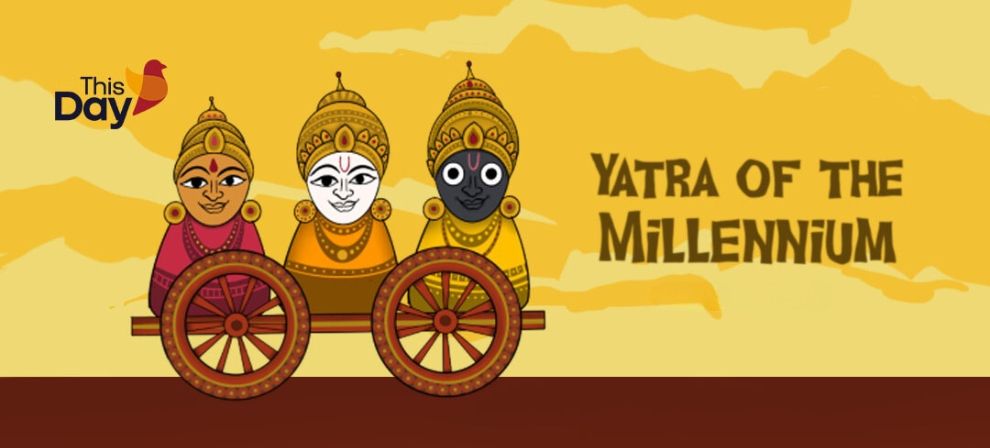
Rath Yatra, Illustrated by Gowri Suresh: Visual Storyteller at ThisDay
Once upon a time, the queens of Lord Krishna requested Queen Rohini, the mother of Balarama to tell them about the stories of notorious Krishna. Before they could start the story, Queen Rohini sent Subhadra to guard the door and also asked her to give them a signal when Krishna arrives.
Soon Krishna and Balarama arrived. Subhadra stretched out her hands to stop them from entering the room where tales of Krishna’s delinquencies filled the air with sounds of laughter. At that very moment, the divine sage, Narada arrived. Enchanted at the sight of the siblings holding each other’s hand, Narada requested them to forever reside on the earth and bless the people with their Darshan. Since then, the three deities reside in Jagannath Puri, and the Rath Yatra is the celebration of this very incident. Lord Krishna who is the epitome of numerous avatars takes up the form of Jagannath on this very day.
Explaining this avatar of Lord Krishna, Devdutt Pattanaik writes- "Locally Jagannath is called Kaliya, for its black colour, with great affection, although modern colour prejudice makes many insist that Krishna is blue. He is God, of course, spelt with a capital G, but more than that he is your friend, as the dominant mood in the temple is of Sakha-bhaav, devotion through the emotion of friendship."
With many such tales, Jagannath Temple in Odisha is famous for the celebration of various festivals throughout the year. But the one that stands out from the rest, the one that receives the attention of not only the Indians but people from all around the world is called Rath Yatra. Nine days and nine avatars, new chariots and special clothes, delicious delicacies, and an overwhelming crowd defines the Yatra of Lord Jagannath.
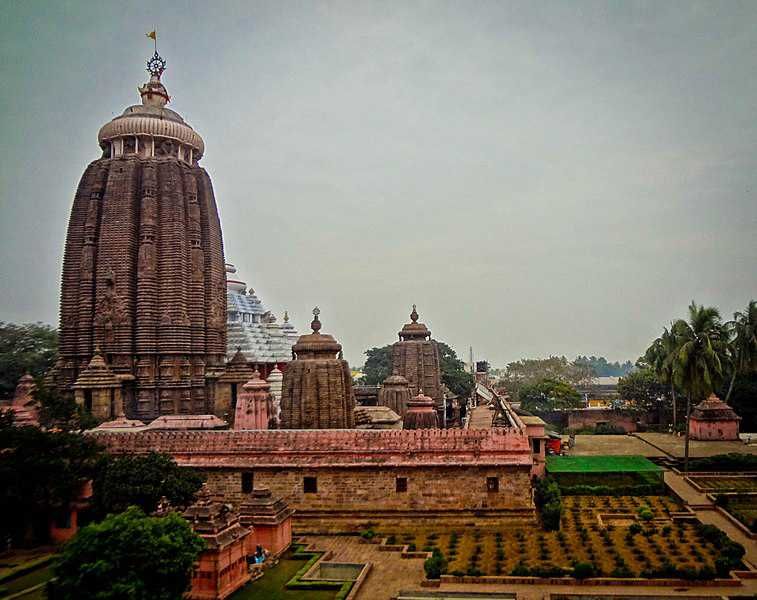
This Yatra of Jagannath aka Krishna is deemed to be one of the most unique ones where the Lord is not worshipped with his spouse but his siblings. As the traditional idols of the deities go, they are malformed with no hands or feet, and unnaturally carved large heads.
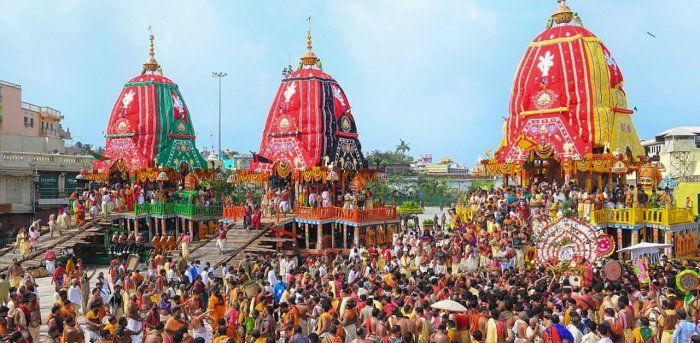
But even these unique idols hide a unique story behind their construction. It is said that once upon a time, there lived an arrogant king named Indradyumna who ruled over Puri. In greed for more power, he attempted to steal the heart of Krishna who was immersed in the Dwarka sea after his cremation. Changing his avatars frequently, Krishna reappeared in the form of a tribal god for his devotees. When Indradyumna tried to claim the idol, Krishna suddenly disappeared from the face of the earth. Regretting his actions, Indra pleaded with Krishna to return to his abode and decided to make an idol of his in a different form.
At the same time, Subhadra and Balabhadra were crying their hearts out while carrying Krishna’s half-cremated body out of the sea. That very night, Indra saw a dream where Krishna was emerging from the waters of Dwarka but in the form of a log.
Waking up from his dream, the king immediately ordered his men to build a temple to house the log that he had seen in his dream. Just then, Lord Vishwakarma, the divine architect entered the court in the form of a carpenter and agreed to carve the idol of Krishna.
It said that when Vishwakarma was carving out the idols, he had instructed everybody not to open the door until he is done. For weeks together, he did not come out of his workshop and did not even ask for food, water, or rest. To check upon the carpenter, the patron king peeped through the door but did not find anybody crafting the idols. Vishwakarma had disappeared, leaving behind three incomplete idols.
During Rath Yatra, 208 kilograms of gold is decorated in such a way that it completes the limbs of all the three deities!
Stories apart, let’s have the tour of one of the most famous chariot festivals of India. The yatra starts with the ritual of Nobo Kaliboro or the rebirth of Lord Jagannath which takes place every 15-19 years since the tedious task of constructing the chariots and idols cannot take place every year. With the coming of the auspicious month of Jyaistha, Jagannath too gets a new body. The very first festival starts with Bana Yaga Yatra. The participants of the yatra enact the arrival of Lord Jagannath at Puri. But what about work distribution? The tasks are divided among all by the Gajapati ruler of Puri.
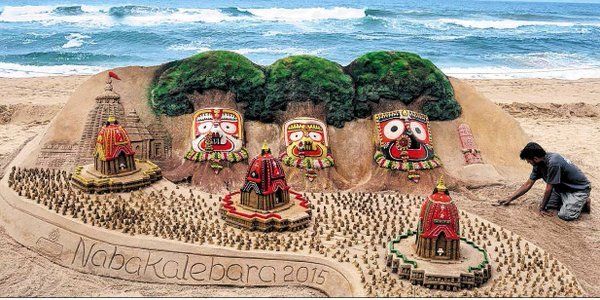
A group of four assume their divine roles. Starting from Vishwavasu who is said to be the tribal devotee of Nilamadhava, Bidyapati who was believed to be the first Brahmin to lay his eyes upon Lord Jagannath to the Lenka Sevak or the temple functionary who is in charge of writing, and Vishwakarma who is appointed as the divine architect and engineer of the rath or the chariots.
Then starts the search for the perfect tree that would be carved to make the idol of Jagannath. Before the advent of the magical journey, the famous four ties a special Khandua (a silk fabric) on their foreheads. This is no normal piece of cloth woven out of dyed threads. In fact, these dyed threads are woven in the form of verses from the Gita Govinda. With this, they finally set their feet on the spiritual journey to Dasaphalla.
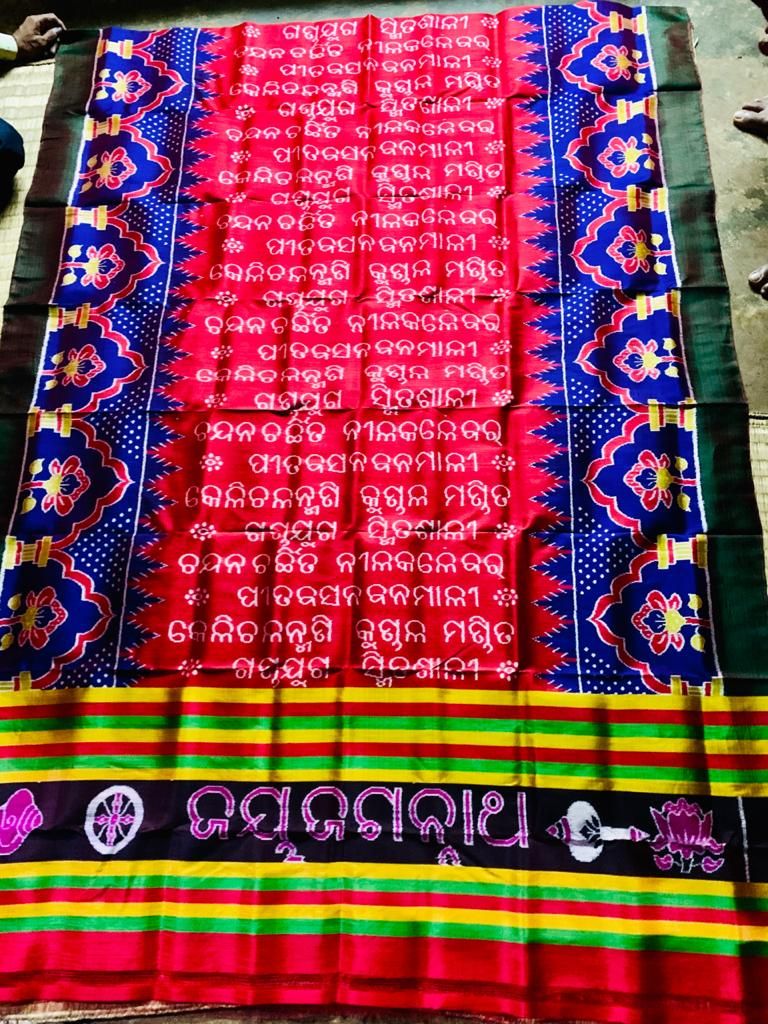
On their way, they stop to offer puja and gifts on behalf of the Lord at the Mangala Devi Temple at Kakatpur. Seeking their blessings in return, they again start their journey. Tired from the tedious walk, all of them finally decide to rest for some time at Devi Matha. It is said that this is the most crucial time of the entire journey. It is during this time when the Vishwakarma Servitors dream about the location of the tree. The next day, all of them start their walk to find the daru (tree). Upon finding it, the Lenka puts a garland on it and marks it, by installing a Sudarshana Chakra beneath it.
After the initial rituals get over, the tree is bathed and the Vishwakarma Servitors touch the tree with gold and silver axes before cutting it into logs or Chaupata. Thereafter, a special cart made up of tamarind wood is brought to carry these holy logs back to the temple. Before placing it in the cart, the logs are carefully wrapped in silk cloth and Khandua.
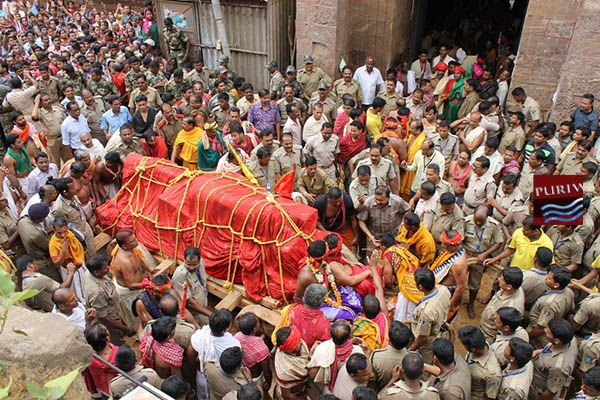
As soon as Chaupata arrives at the temple, it is kept in a special workshop called Nirman Gruha. No one is allowed to see the logs except for senior priests. Another interesting event that takes place in this workshop is the transfer of the soul or Ghata Paribartan. The eldest priest ties a cloth on his eyes and transfers the soul or Bramha from the old idol to the new idol. It is also believed that if the priest sees the soul, then he would lose his eyesight forever. Then, the old idols and parts of the rath are buried after a purification ceremony called suddikriya.
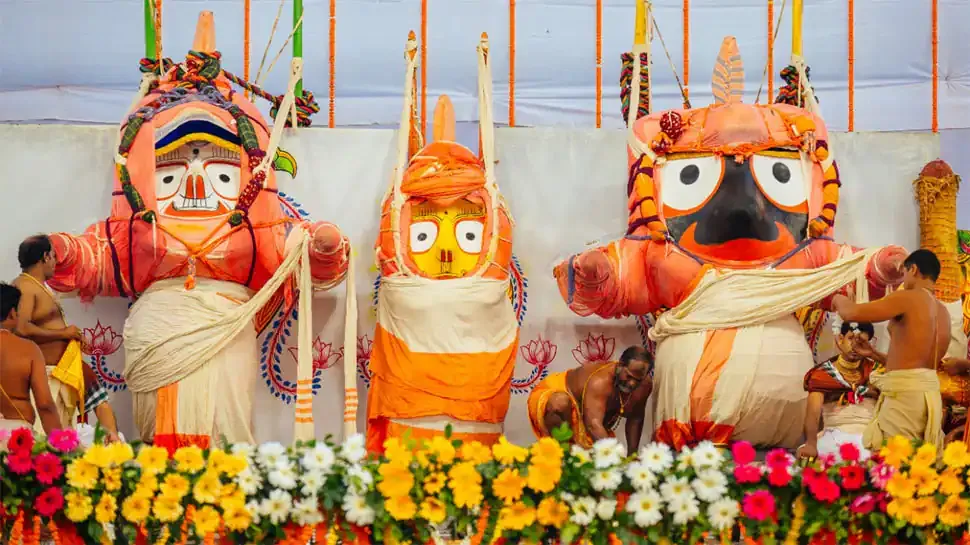
Then comes the famous Snan Yatra. In the month of Jyaistha, this yatra takes place to celebrate the birthday of Lord Jagannath. In this ceremony, the divine siblings finally come out of the workshop and take a bath. Amidst the sound of loud bugles, music, celebrations, and a huge crowd, all the three deities are decorated with flowers and bathed with a hundred and eight pots of water from the Suna Kuan (golden well) present in the temple complex.
After the bathing ceremony, the deities are dressed in Hastibesha (the garb of an elephant). This besha (form) has an interesting story behind it. It was said a long time ago, a scholar was invited by the Gajapati ruler to accompany him to Sri Mandir. But the scholar outrightly refused and claimed that he only worshipped Lord Ganesha. It was during this time when Jagannath appeared in the form of the elephant God, Ganesha. This not only surprised the scholar, but Lord Jagannath yet again proved his love for his devotees.
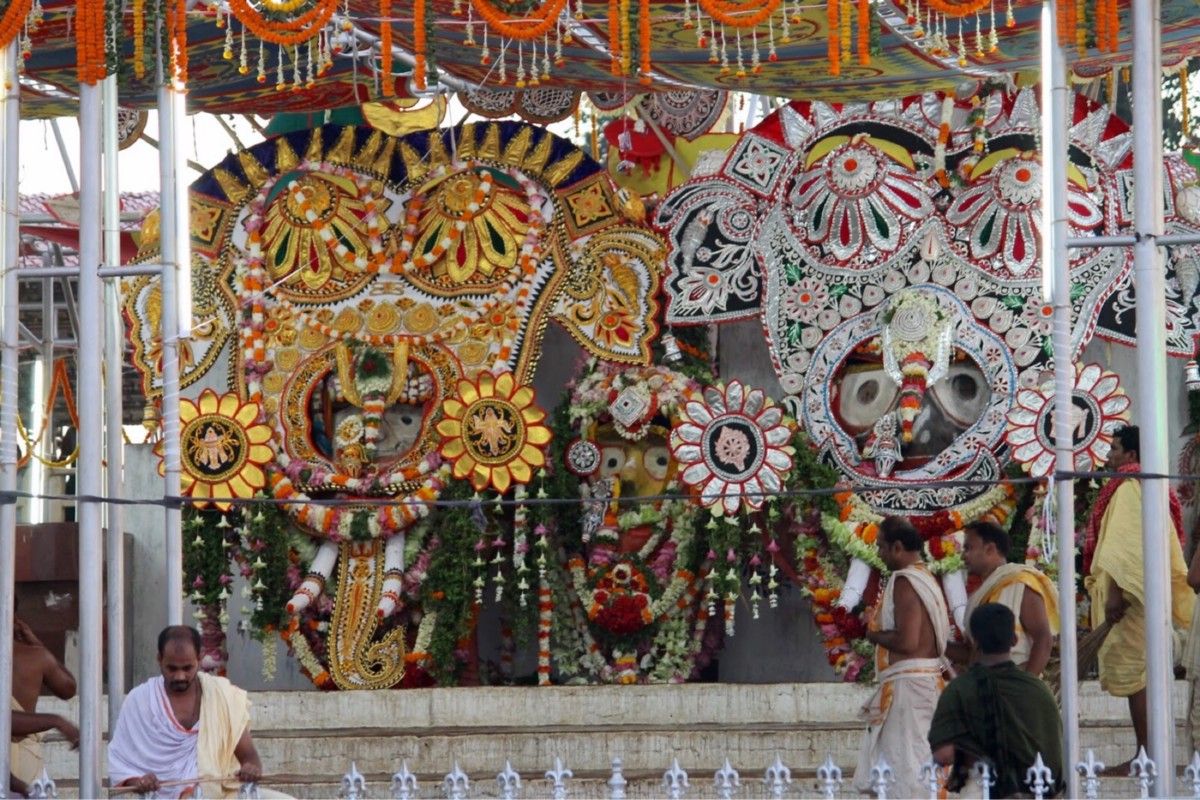
After the bathing ceremony is over, it is believed that the deities suffer from fever due to the cold water. This period also known as Anavasara stretches for fifteen days. After the siblings get well from their sickness, another ritual follows. Called Netroutsav, the eyes are painted on the freshly-bathed bodies of the Lords.
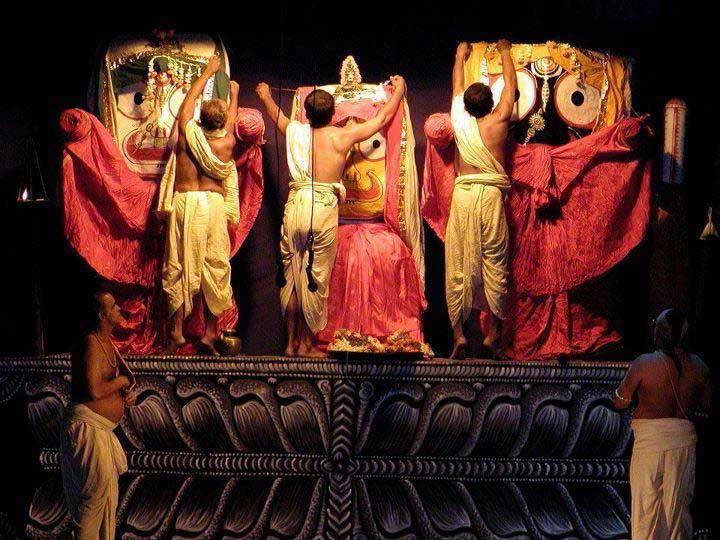
The next day marks the beginning of the Rath Yatra. Chariots are built for Jagannath, Balabhadra, and Subhadra. All the three chariots house their respective deities. Each chariot has nine sages that depict the significance of nine planets. Every rath is different from each other in terms of their names, colours, charioteers, horses, and reins used to control the horses.
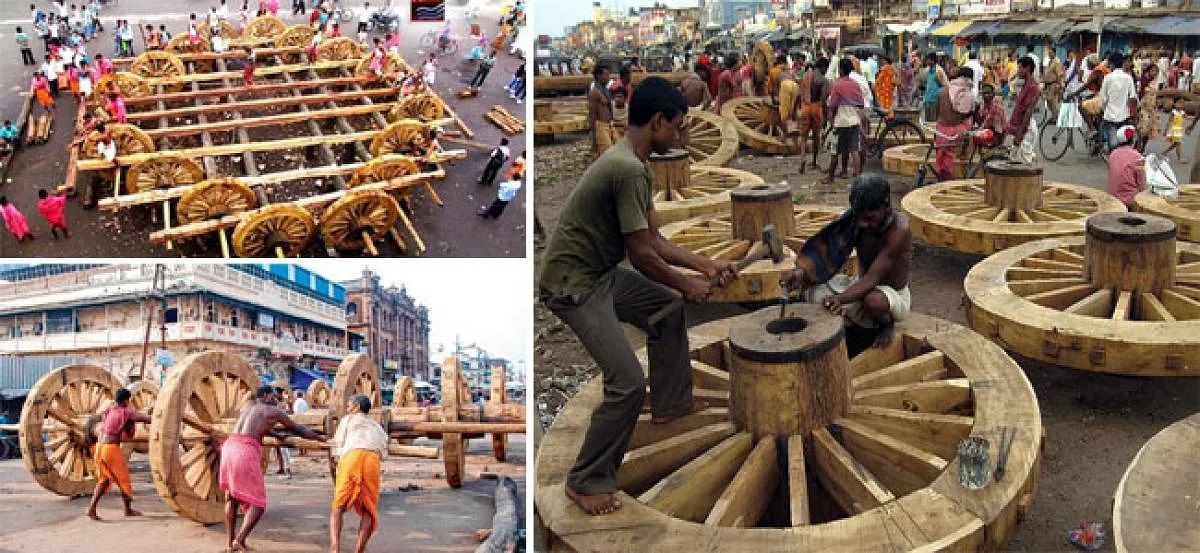
Out of all the three chariots, Jagannath’s rath stands out due to its whopping height of forty-five feet. An amalgamation of red and yellow colours, the chariot of Lord Jagannath is called Nandighosha which takes around two months for construction. With four horses named Shankha, Shveta, Balahaka, and Haridasva, Maruti, the charioteer pulls the reins.
All these festivities start only after the inaugural event called Chera Pahara. In this event, the Gajapati ruler claims himself to be the ‘servant of the Lord’ and sweeps the platform of each chariot before the deities finally enter. Devotees then pull these chariots for three kilometers till the siblings reach the house of their aunt, Gundicha.
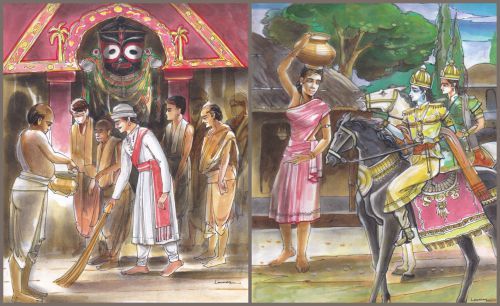
It is said that in the excitement to eat the pancakes and other delicacies made by the aunt, Jagannath leaves behind his wife, Goddess Lakshmi. In a fit of anger and jealousy, Goddess Lakshmi destroys Jagannath’s chariot and hides behind a tree. When Lord comes out of Gundicha temple and sees that his chariot is no more in a working condition, he tries to find Lakshmi. This attempt to find his beloved marks the start of Hera Panchami (to look for or find).
After staying for a week at their aunt’s house, the siblings finally start their Bahuda Yatra (the return journey). Here, in Sri Mandir, lakhs of devotees wait for the Lord to arrive and accept their gifts. It is during this day when all the three deities are laden with gold from head to toe and this form of theirs’ is also known as Sunabesha. This event finally marks their homecoming.
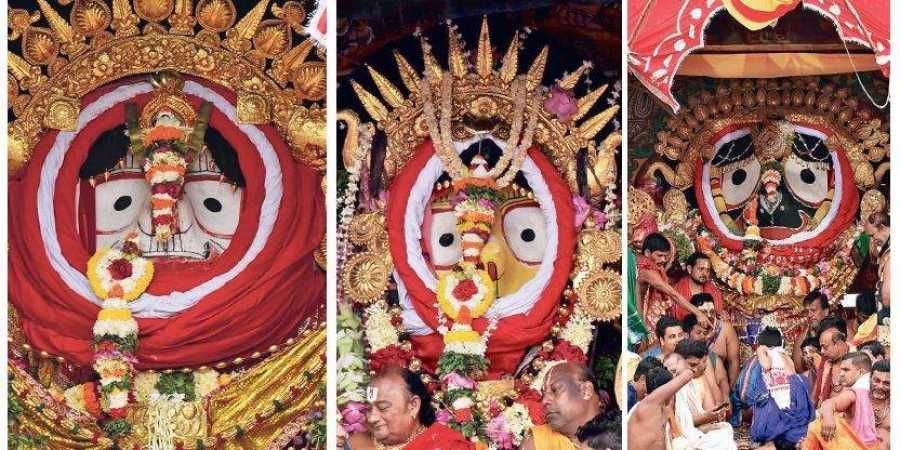
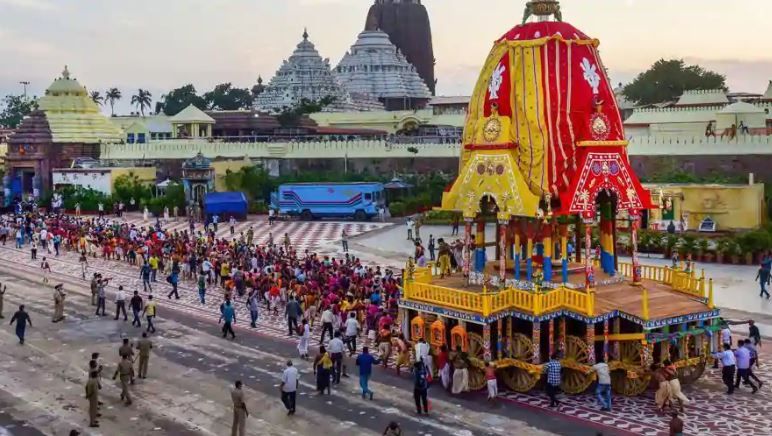
However, Subhadra and Balabhadra are allowed to enter, but Jagannath is not allowed to step into the temple. It is said that Goddess Lakshmi is still upset at her husband and shuts the door on his face. Lord Jagannath tries to pacify her and asks for her forgiveness. It feels as if the Lord has marital problems just like the guy next door. After lots of ruthna-manana, the goddess finally allows him to step into the temple.
This is where the real essence of this festival starts when the world-famous mahaprasad is made. Seven earthen pots, fifty-six dishes, eight hundred cooks, and innumerable devotees standing in a line to receive the prasad define the making of mahaprasad. Interestingly, when the seven pots are kept in a linear pattern on top of one another, the food starts boiling in the top-most pot. It is also said that there is no shortage despite the increase in the number of devotees waiting to savour the mahaprasad.
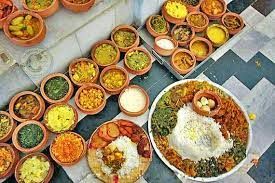
The yatra finally comes to an end with the last event of the homecoming of all the deities called the Niladri Bije. When Jagannath, Subhadra, and Balabhadra finally sit in the Garbha Griha of the temple, all the fun and frolic of Rath Yatra comes to a standstill.
It is not the wood or the stone that makes this yatra special. It is the popularity of the Jagannath cult present all over the world that becomes a motivation for more than seventeen lakh deities to attend this festival in Puri every year.


